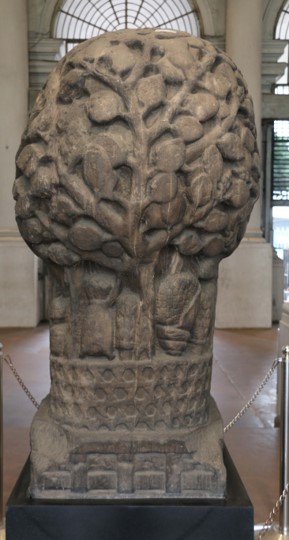Kanika Gupta, the future activist-in-residence at the Slovene Ethnographic Museum, gave an online public lecture on an ancient Indian motif of the female and the tree. The event took place on 25 May 2021 via Zoom.

Kanika Gupta discussed several different stories from the Indian cultural treasure trove, namely the two major Sanskrit epics of ancient India, Ramayana and Mahābhārata, as well as the Jain text Vāsudevahiṇḍī and the buddhist Jataka tales. The texts made aware of the existence of ancient forest communities in India that were closely connected with nature. They worshiped natural deities, particularly a tree deity identified in a stone sculpture of a young girl, touching the tree. The generic name of those sculptures is Yakshi, however the identity of the cult of Yakshi as well as the female with a tree remains unclear. Yakshi has been subjugated and appropriated by all the three surviving ancient cults from India, namely Jainism, Buddhism and Brahmanism, and serves as a tool to convey their ideologies today.
It is fascinating that we can learn about ancient Indian forest communities only through surviving ancient texts which clearly show that those communities and their ways of life underwent repression, marginalization and appropriation of stronger religions. The latter erased basic forest communities' values and transformed them to fit into their frame of understanding the world. Together with this process, the meaning of the sculptures has changed as well, since they had lost their identity as a deity and became only a source of aesthetic pleasure. Gupta emphasized that today's communities which worship natural deities have also been marginalized in Indian society. How to build more equitable society and better future for all? The answer to this question perhaps lies in the traces of ancient wisdom.
Rewatch the lecture here.